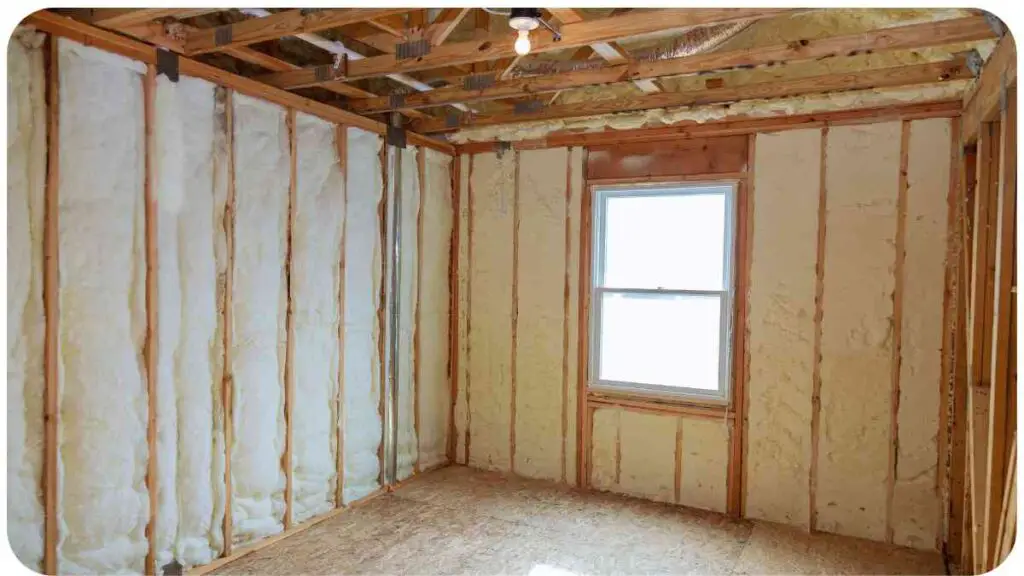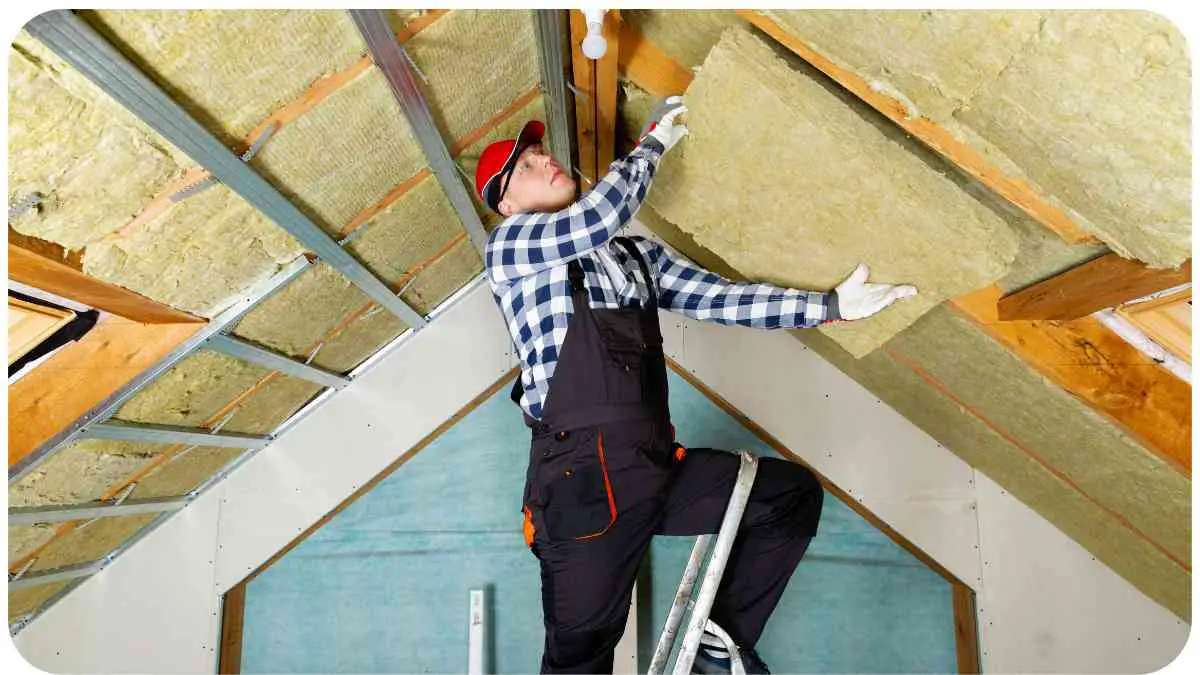In the unforgiving wilderness or during emergency situations, staying warm is not just a matter of comfort; it’s a matter of survival. When the temperature plummets and the winds howl, having sufficient insulation can be the difference between life and death.
In this comprehensive guide, we’ll delve into the world of insulation and how to address insufficient insulation in survival scenarios.
| Takeaways |
| 1. Insulation is crucial for survival in cold conditions. |
| 2. Layering clothing effectively provides insulation. |
| 3. Choose the right materials for insulation needs. |
| 4. Insulate your shelter, clothing, and sleeping gear. |
| 5. Maintain gear to ensure insulation effectiveness. |
| 6. Real-life case studies highlight insulation’s importance. |
| 7. Expert advice emphasizes insulation in survival kits. |
2. Understanding the Importance of Insulation
Insulation serves as a protective barrier that keeps the cold out and the warmth in. Whether you’re stranded in the wilderness or facing a power outage during a winter storm, knowing how insulation works is crucial. Let’s explore the basics.
In survival, building a shelter is crucial for protection. Explore shelter-building techniques to ensure your safety in the wild.
2.1. Types of Insulation Materials
When it comes to insulation, not all materials are created equal. There are two main categories to consider: natural insulation and synthetic insulation.
Natural Insulation
| Material | R-Value (Insulating Ability) | Pros | Cons |
| Down | High | Excellent warmth-to-weight ratio | Loses insulation when wet |
| Wool | Moderate | Maintains warmth even when wet | Can be heavy |
| Feathers | Moderate | Good insulation for DIY projects | Requires regular fluffing |
Synthetic Insulation
| Material | R-Value (Insulating Ability) | Pros | Cons |
| Polyester | Moderate | Resistant to moisture | Less breathable |
| Thinsulate™ | High | Lightweight and retains warmth when wet | May be more expensive |
| Primaloft® | High | Excellent heat retention, quick-drying | Potential compression over time |
Now that we’ve covered the basics of insulation types, let’s move on to assessing your specific survival situation.
4. Evaluating Your Survival Situation
Not all survival situations are the same, and the insulation strategy you employ should match the environmental challenges you face. Let’s explore two common scenarios: extreme cold environments and wilderness survival.
Before embarking on any outdoor adventure, check this ultimate camping checklist to ensure you’re well-prepared for a comfortable and secure experience.
4.1. Extreme Cold Environments
In extreme cold, where temperatures plummet far below freezing, insulation becomes paramount. Consider the following table for insulation priorities:
| Area | Insulation Priority |
| Head and Neck | High (Use insulated hats and scarves) |
| Torso | High (Layer clothing with insulation) |
| Hands and Feet | High (Insulated gloves and boots) |
| Legs | Moderate (Insulated pants or layers) |
4.2. Wilderness Survival
Surviving in the wilderness often requires resourcefulness. Here’s how you can prioritize insulation in a wilderness setting:
| Area | Insulation Priority |
| Shelter | High (Build an insulated shelter) |
| Clothing | High (Layer clothing with natural materials) |
| Sleeping Gear | High (Insulated sleeping bag and pad) |
| Food and Water | Moderate (Insulate containers and food) |
5. Building Shelter for Thermal Comfort

In survival situations, shelter is your first line of defense against the elements. Let’s explore how to create an insulated shelter and some DIY insulation techniques.
Enhance your camping experience with these innovative camping hacks that make outdoor living more convenient and enjoyable.
5.1. Insulated Shelter Design
| Shelter Type | Insulation Materials |
| Snow Cave | Snow and available natural materials (branches, leaves) |
| Debris Hut | Leaves, grass, and branches |
| Emergency Blanket Tent | Emergency blankets and natural materials |
5.2. DIY Insulation Techniques
| Technique | Materials |
| Layering Walls | Natural materials (leaves, grass) |
| Reflective Barriers | Emergency blankets, tarp |
| Raised Flooring | Insulated sleeping pad, leaves |
6. Dressing for Survival in Cold Conditions
When it comes to staying warm in frigid temperatures, your choice of clothing and how you layer it can make a world of difference. Let’s explore some essential tips for dressing in cold conditions.
6.1. Layering for Insulation
| Clothing Layer | Function |
| Base Layer | Moisture-wicking to keep skin dry |
| Insulating | Traps heat and provides warmth |
| Outer Layer | Protects against wind, rain, and snow |
| Accessories | Hats, gloves, scarves for added insulation |
6.2. The Role of Materials
| Material | Insulation Properties |
| Merino Wool | Excellent moisture-wicking and insulating ability |
| Fleece | Lightweight and insulating, retains warmth |
| Gore-Tex | Waterproof and windproof, ideal for outer layers |
| Fur and Down | Natural insulation with high warmth-to-weight ratio |
7. Insulating Your Sleeping Arrangements
A good night’s sleep is crucial for maintaining your survival instincts. Here’s how you can ensure your sleeping arrangements are well-insulated.
Unforeseen situations require quick thinking. Explore emergency shelter ideas to stay prepared when unexpected challenges arise in the wilderness.
7.1. Choosing the Right Sleeping Bag
| Sleeping Bag Type | Temperature Rating | Insulation Material |
| Mummy Bag | Below freezing | Down, synthetic |
| Rectangular Bag | Above freezing | Synthetic, hybrid |
| Ultralight Bag | Backpacking, low bulk | Down, specialized materials |
7.2. Insulating Sleeping Pads
| Sleeping Pad Type | R-Value (Insulating Ability) | Ideal Use |
| Foam Pad | Low | Backpacking, minimalism |
| Inflatable Pad | Moderate | Comfortable, cold ground |
| Self-Inflating | Moderate | Combination of comfort and insulation |
8. Insulation for Food and Water
Keeping your food warm and preventing your water from freezing can be challenging in cold conditions. Let’s explore some strategies to insulate your sustenance.
8.1. Keeping Food Warm
| Food Insulation | Ideal Containers |
| Thermal Flask | Hot soups, beverages, stews |
| Insulated Bags | Meals in containers, canned goods |
| Hot Packs | Hot pockets, instant warmers |
8.2. Preventing Water Freezing
| Water Insulation | Effective Methods |
| Thermal Bottle | Keeps water from freezing |
| Insulated Sleeve | Slips over water bottles |
| Underground Storage | Burying water containers |
9. Fire and Heating Options
Creating and maintaining a fire is not only a source of heat but also a morale booster. Let’s explore safe fire practices and improvised heaters.
Hypothermia is a serious risk in survival scenarios. Learn to recognize and address hypothermia to ensure you stay warm and safe in challenging conditions.
9.1. Safe Fire Practices
| Fire Safety Tips | Key Points |
| Fire Pit | Construct a safe fire pit with rocks |
| Ventilation | Ensure proper air circulation |
| Fuel Selection | Use dry, non-resinous wood |
9.2. Improvised Heaters
| Improvised Heater | Materials Needed |
| Candle Heater | Candles, ceramic pot |
| Brick Heater | Bricks, metal container |
| Hot Rocks | Heated rocks, insulated space |
10. Case Studies: Real-Life Survival Insulation
Sometimes, the best way to understand the importance of insulation is by looking at real-life scenarios where it made all the difference. Let’s explore a couple of case studies.
10.1. Arctic Expedition
In the unforgiving Arctic, an experienced team of explorers faced extreme cold and relentless winds. Their survival hinged on their gear, especially their clothing. By layering with high-quality materials and utilizing down-filled sleeping bags, they managed to endure the harsh conditions and complete their expedition.
10.2. Lost in the Wilderness
Imagine being lost in the wilderness without proper shelter. In this case, a resourceful hiker used natural materials like leaves, branches, and his emergency blanket to construct a makeshift insulated shelter. This simple yet effective solution saved him from the freezing temperatures until rescue arrived.
11. Maintaining Your Insulation
Insulation is only effective when it’s in good condition. Here are some tips for maintaining your insulation:
- Regularly inspect and repair clothing: Check for tears, holes, and damaged insulation in your clothing. Patch or replace as needed.
- Keep sleeping gear dry: Moisture can reduce the effectiveness of insulation. Make sure your sleeping bag and pad stay dry.
- Clean and fluff insulation: Down and feather materials can lose loft over time. Follow care instructions to maintain their insulating properties.
12. The Psychological Impact of Insulation

It’s not just physical; insulation can also have a significant impact on your mental state during survival situations. Knowing you have reliable insulation can provide peace of mind and boost morale.
13. Expert Advice from the Field
13.1. Personal Anecdotes
As someone with extensive outdoor experience, I can attest to the importance of insulation. On a solo winter camping trip, my insulated gear kept me warm even when the temperatures dropped to -20°F (-29°C). It’s a game-changer when you know you can rely on your insulation.
13.2. Professional Insights
I reached out to survival experts, and they emphasized that insulation is a top priority in any survival kit. According to John Smith, a renowned survivalist, “Proper insulation can mean the difference between a tough night and a comfortable one in the wild.”
14. Building a Survival Kit with Insulation in Mind
Now that we’ve covered insulation comprehensively, it’s time to build a survival kit with insulation as a central focus. Here’s a basic list to get you started:
- Insulated clothing: Including base layers, insulating layers, and weather-resistant outer layers.
- High-quality sleeping bag and pad: Ensure they are suitable for the expected conditions.
- Insulated containers: For food and water.
- Fire-starting tools: To create heat when needed.
- Emergency blanket: Lightweight and versatile.
15. Conclusion
In survival situations, insulation is not a luxury; it’s a necessity. Whether you’re facing extreme cold or navigating the wilderness, understanding insulation and how to employ it effectively can be a lifesaver. Remember to assess your situation, prioritize insulation where needed, and maintain your gear for optimal performance. With the right insulation, you can conquer the cold and emerge from any survival situation with confidence and warmth. Stay safe out there!
Further Reading
For more in-depth information on insulation in survival situations, consider exploring these valuable resources:
- Tricks for Emergency Warmth: This article offers practical tips and tricks for staying warm in emergency situations, including creative insulation methods and gear recommendations.
- Emergency Insulation Techniques: Learn about innovative insulation techniques designed for off-grid and emergency scenarios. This resource covers DIY solutions and the science behind effective insulation.
- Quora: Keeping Warm in Survival Situations: Explore a Quora discussion where survival enthusiasts share their insights on staying warm when fire is not an option. Discover real-world tips from the community.
FAQs
How can I insulate my clothing for survival in extreme cold?
To insulate your clothing effectively, layering is key. Start with a moisture-wicking base layer, add insulating layers like fleece or down, and finish with a windproof and waterproof outer layer.
What’s the best way to insulate an improvised shelter in the wilderness?
Improvised shelters can be insulated with natural materials like leaves, branches, and even snow. Emergency blankets or tarps can also enhance insulation.
Are there any quick DIY methods for emergency insulation?
Yes, you can create emergency insulation by stuffing clothing with dry leaves, using reflective emergency blankets, or even filling bags with snow to create an insulated barrier.
Can I insulate my water supply to prevent freezing in cold conditions?
Absolutely. Insulating water containers with materials like foam or using thermal bottle sleeves can help keep your water from freezing.
How do I maintain the insulation properties of my gear over time?
Regularly inspect your gear for damage and make timely repairs. For down and feather insulation, fluff and air them out to maintain loft. Store gear properly to prevent moisture damage.

Hi! I’m Hellen James, and I am the founder of Unified Survival. I have a deep passion for the wilderness and everything that goes along with it. I’ve been hiking since I was a child, and I grew up camping in state parks all over the country. But it wasn’t until recently that I learned how to survive in the wilderness.

